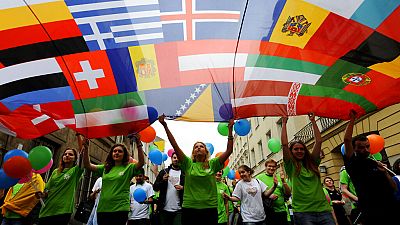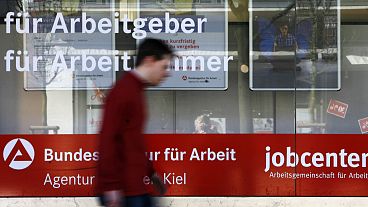Some 27.5 million people in the EU's labour force could not work the hours they desired in 2022.
Slightly more than 1 in 8 people in the EU labour force had an unmet need for employment, despite a drop in the unemployment rate, the latest data released by Eurostat has shown.
The labour market "slack," aged 15 to 74 years, accounted for 12.3 per cent of the extended labour force.
That means 27.5 million people in the European Union were either unemployed, underemployed, seeking work but not immediately available, or were available but not seeking work.
According to the International Labour Organization's definition, labour market slack refers to the difference between workers' desired amount of work and the amount of paid work available.
The labour market slack also takes the unique situation, caused by the COVID-19 pandemic, into account as active measures to contain employment losses led to absences from work rather than dismissals.
That resulted in individuals not being able to look for work, yet not being fully employed at the same time.
A high labour market slack value results in people working fewer hours than they wish or ultimately, becoming unemployed.
Unemployment rate decreases for a second consecutive year
The unemployment rate in the EU was 5.9 per cent of the extended labour force in 2022.
That corresponds to 13.2 million people - nearly half of the jobseeking population - with unmet needs for employment.
However, the rate of unemployment has been decreasing since 2020, an increase caused due to "due not to an increase in unemployment but rather the increase in the number of people available to work but not seeking it" according to Eurostat's report.
Despite the continual overall decrease, the latest figures show a disparity between EU member states. The unemployment rate in Spain and Greece were the highest, still recovering from the unemployment wave following the 2008 recession.
The Czech Republic registered the lowest unemployment rate in 2022 among the EU states, yet, 74.7 per cent of the people in the labour market slack were unemployed in the country.
Spain and Italy with the highest labour market slack
Taking all of ILO's factors of labour market slack into account, central EU states had lower labour market slack while northern and southern states clocked the highest rates.
Spain, Italy, and Greece had the highest labour market slack in 2022 according to the report. While Spain's and Greece's numbers were amplified by higher unemployment rates, Italy's labour market had more people who did not seek for jobs despite being available.
The Czech Republic had a labour market slack of 3 per cent of the extended labour force, followed by Malta and Poland with figures below 5 per cent.



